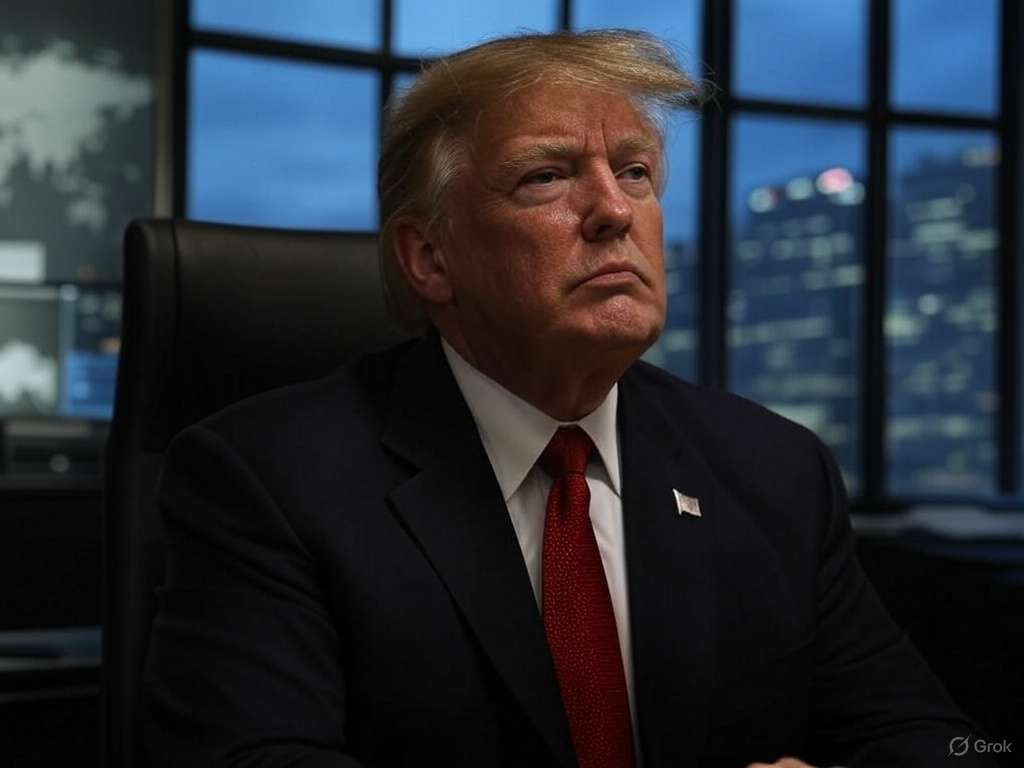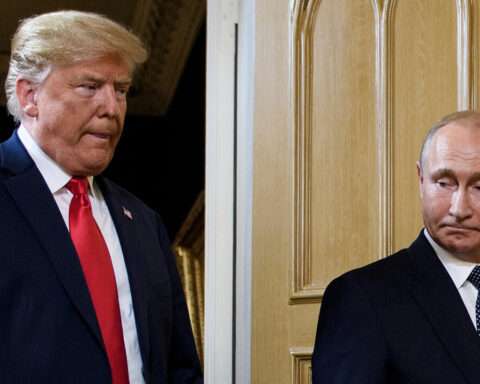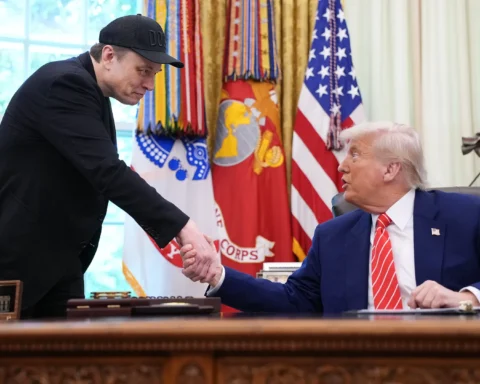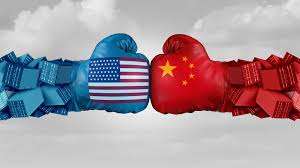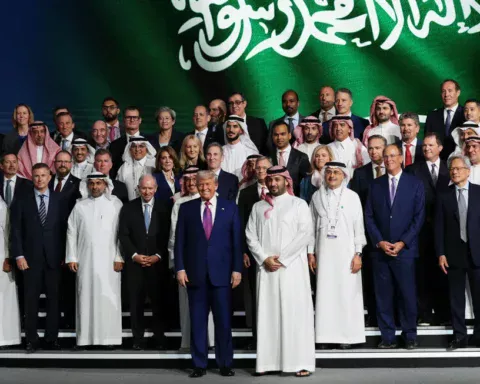As President Donald Trump contemplates imposing sweeping tariffs that could reshape decades of global trade policy, the world watches with bated breath. His administration’s aggressive stance on trade, marked by reciprocal tariffs set to be unveiled on what he calls “Liberation Day,” threatens to upend international markets, strain alliances, and ignite retaliatory measures from nations like Canada, China, and the European Union.
With promises of tariffs that could generate trillions in revenue while protecting American industries, Trump’s bold strategy has sparked a mix of anticipation, fear, and uncertainty, leaving businesses, investors, and governments scrambling to predict the fallout of a policy decades in the making.
It’s April 1, 2025, and the clock is ticking toward Trump’s self-imposed deadline of April 2, when he is expected to announce these transformative tariffs.
The president, now in his second term, has long championed protectionism, wielding tariffs as a tool during his first administration and now doubling down with even greater ambition. From 20% levies on Chinese goods to a 25% tax on imported cars, his recent moves signal a seismic shift that could redefine America’s role in the global economy.
Yet, as allies warn of retaliation and critics decry the potential for economic chaos, the stakes have never been higher.
A Legacy of Protectionism Resurfaces
Trump’s tariff agenda is not a sudden whim but a culmination of decades of trade grievances he’s voiced since the 1980s. Back then, as a brash real estate mogul, he criticized Japan for what he saw as unfair trade practices, arguing that America was losing jobs and wealth to foreign competitors. Fast forward to 2025, and that rhetoric has evolved into a full-fledged policy platform.
His first term saw tariffs on steel, aluminum, and Chinese goods, but this time, the scope is broader and the rhetoric sharper. White House aide Peter Navarro recently claimed on Fox News that these tariffs could raise $6 trillion over the next decade, framing them as a boon for American prosperity rather than a tax burden.
The president’s narrative hinges on “reciprocity”—the idea that if other nations impose tariffs on U.S. goods, America should hit back just as hard. He’s pointed to examples like Brazil’s 18% ethanol tariff compared to the U.S.’s 2.5%, or Europe’s 10% car tariff versus America’s lower rates.
For Trump, this isn’t just about economics; it’s about national pride and security. “Tariffs are jobs, tariffs are national security,” Navarro echoed on Fox, encapsulating the administration’s belief that protectionism will revive American manufacturing and shield it from global threats.
The World Watches in Suspense
Across the globe, Trump’s tariff threats have sent shockwaves through markets and capitals alike. In Asia, stocks wobbled as Japan and South Korea braced for the impact on their auto exports, with Japanese Prime Minister Shigeru Ishiba warning that “all options” are on the table.
Europe’s automakers, particularly in Germany, felt the heat as shares dipped following Trump’s announcement of a 25% tariff on imported cars, set to take effect April 3. The BBC reported that the UK, too, expects to be caught in the crossfire, with officials not ruling out retaliatory measures.
Canada, a key U.S. trading partner, has been particularly vocal. Prime Minister Mark Carney called the tariffs a “direct attack,” hinting at violations of the USMCA trade pact.
Ontario Premier Doug Ford upped the ante, imposing a 25% surcharge on electricity exports to the U.S., a move he said could add $100 monthly to American bills. “We two friends fighting is exactly what our opponents want to see,” Carney lamented to CNN, underscoring the strain on a historically close alliance. Mexico, meanwhile, faces renewed pressure after a brief reprieve from earlier tariffs, with its auto industry now in the crosshairs.
Trump Mulls Fateful Tariffs Decades in the Making
At the heart of this global tension lies Trump’s vision of tariffs as a generational opportunity, a policy he’s mulled for decades and now seeks to cement as his legacy. The Washington Post reported that he’s urged aides to “go bigger,” viewing the April 2 announcement as a chance to either extract concessions from trading partners or lock in permanent levies.
His team remains tight-lipped on specifics, with National Economic Council Director Kevin Hassett telling Fox that the president will decide “how many countries” to target. This ambiguity has only heightened the unease, as businesses and investors grapple with a lack of clarity.
Trump’s rhetoric has grown bolder as the deadline nears. In an NBC interview, he shrugged off concerns about rising car prices, saying, “I couldn’t care less—I hope they raise their prices, because people are gonna buy American-made cars.”
He’s framed the tariffs as a win-win: either foreign firms relocate to the U.S., or American consumers shift to domestic products. Yet, this optimism clashes with warnings from economists, who argue that such sweeping duties could disrupt supply chains, spike inflation, and burden consumers—a far cry from the “price stability” Navarro touts.
Economic Ripples and Retaliatory Risks
The economic implications of Trump’s tariff push are staggering. CNN highlighted Navarro’s $6 trillion revenue projection, noting it could mark the largest tax hike in U.S. history if borne by American consumers—a point critics like Senator Mark Warner seized on, calling it “a tax” pure and simple.
The New York Times warned that the auto industry, with its intricate global supply chains, could face chaos, as companies like Ford and General Motors scramble to adapt. Tesla, producing solely in the U.S., might gain an edge, but most automakers fear production halts and higher costs.
Retaliation looms large. Canada’s threats of tariffs on $86.2 billion in goods signal a tit-for-tat escalation, while the EU’s Ursula von der Leyen cautioned that the measures would be “bad for businesses” and “worse for consumers.”
Germany’s Robert Habeck urged a unified European response, reflecting a broader shift among U.S. allies to “defense mode,” as the Times put it. Even Trump acknowledged the risk, telling NBC he’s unconcerned if China, Japan, and South Korea band together, claiming they might “do better” under his tariff regime—a statement that baffled analysts.
A Divided Domestic Front
Back home, Trump’s tariff gamble has split opinions. Supporters, including some U.S. firms spotlighted by the BBC, see it as a chance to level the playing field against “unfair” trade practices.
Manufacturers in steel and ethanol cheer the prospect of reduced foreign competition, echoing Trump’s “America First” ethos. On Fox, Navarro insisted that past tariffs on China brought “prosperity,” a claim that resonates with the president’s base.
Yet, dissent is growing. Senator Ron Johnson, a Republican from Wisconsin, voiced concerns to the Post about the “double-edged sword” of tariffs, relaying fears from manufacturers in his state.
The New York Times editorial board went further, arguing that Trump’s justifications—revenue, security, leverage—make “absolutely no sense” and risk plunging the U.S. into its highest tariff levels since the 1940s. Public sentiment, per CBS polling cited by the BBC, shows 72% of Americans expect price hikes, with over half feeling the administration isn’t focused enough on cost relief.
The High-Stakes Countdown
As “Liberation Day” approaches, Trump’s tariff plan remains a high-stakes gamble. Will it force concessions, as he hopes, or spark a global trade war?
The president’s weekend threats of secondary tariffs on Russian oil and Iranian goods—tied to geopolitical demands—add another layer of complexity, signaling that trade is now a weapon in his broader foreign policy arsenal. “If they don’t make a deal, there will be bombing,” he warned Iran on NBC, blending economic and military brinkmanship.
For now, the world holds its breath. Wall Street traders, per CNN, are on edge, with U.S. stocks poised for their worst quarter in years. Businesses weigh the costs of relocating production, while consumers brace for higher prices on everything from cars to groceries. Trump’s vision, decades in the making, promises liberation for America—but at what cost to the globe?
Focus Keywords: Trump tariffs, global economy, reciprocal tariffs, Liberation Day, trade war, U.S. allies, auto industry, economic impact, protectionism, April 2 2025


